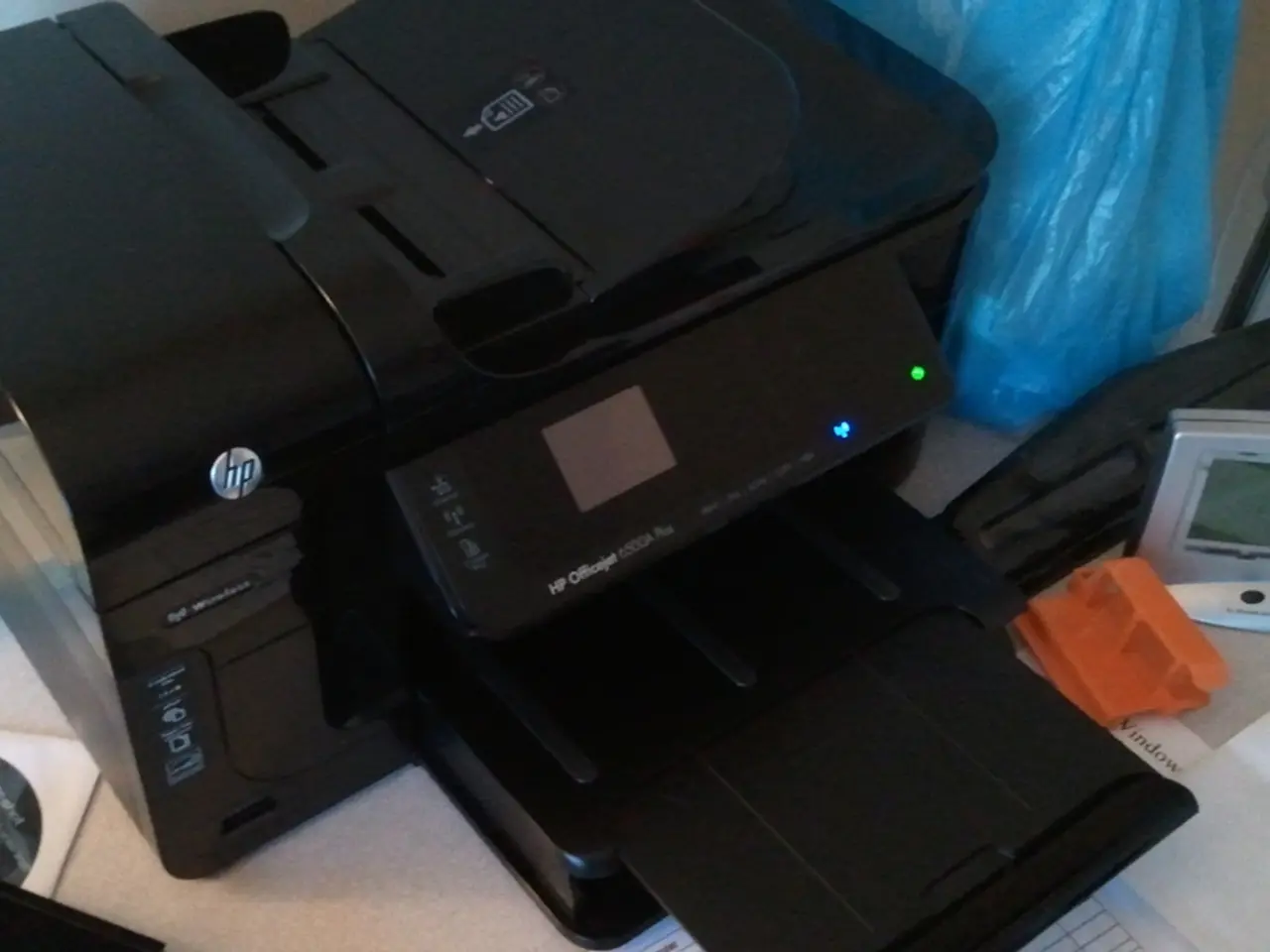The Evolution of Data Storage: Charting our Journey from Floppy Disks to Current Systems
In the early 1970s, the floppy disk was introduced by IBM, marking a significant milestone in the world of data storage. The 8-inch floppy disk, licensed from Shugart Associates, paved the way for portable data storage and software distribution [3].
However, it was the 5.25-inch floppy disk, introduced in the 1980s, that became the standard for personal computers. With a capacity of around 360 kilobytes (KB), it offered a leap in storage capabilities compared to its predecessor [3]. The 3.5-inch floppy disk, introduced in the 1990s, further boosted storage capacity to 1.44 megabytes (MB), making it the go-to medium for storing and sharing data in the decade [3].
Despite its initial success, the floppy disk's reign was short-lived. By the end of the 2000s, it had essentially been phased out of mainstream use due to its limited capacity and performance compared to newer technologies [3]. The rise of hard drives, CD-ROMs, and other forms of storage in the late 1990s and early 2000s outpaced the capabilities of floppy disks, making them increasingly irrelevant [3].
Modern storage solutions, such as cloud storage, hard drives (HDDs), and solid-state drives (SSDs), offer vastly superior capacities, speeds, and reliability.
| Storage Type | Capacity Range | Speed (Read/Write) | Reliability & Longevity | |---------------------|-----------------------|----------------------------------|-------------------------------------------------| | Floppy Disk | Up to 1.44 MB (standard), ~200 MB (HiFD) | Very slow by modern standards; floppy drives have slow read/write times and mechanical parts prone to failure [1] | Low; easily damaged, magnetic medium degrades, limited rewrite cycles | | Hard Drives (HDD) | Several TBs (e.g., 30 TB Seagate drives) | Hundreds of MB/s to low GB/s depending on model [4] | Generally reliable, but moving parts can wear; good for long-term bulk storage | | Solid-State Drives (SSD) | Hundreds of GBs to multiple TBs | Thousands of MB/s (NVMe can reach several GB/s) [2] | High reliability; no moving parts; needs free space for wear leveling and garbage collection; performance depends on flash type (SLC, MLC, TLC, QLC) [2] | | Cloud Storage | Virtually unlimited (depends on provider) | Variable; depends on internet speed; high latency compared to local storage | High redundancy and backups; depends on network & provider policies |
HDDs have evolved to provide multi-terabyte storage with relatively high speed and good durability suitable for data centers and consumer use [4]. SSDs offer much faster access speed and better reliability than HDDs but require management of flash memory [2]. Their speed benefits from caching and wear leveling, with performance degrading if the drive is nearly full [2].
Cloud storage emphasizes accessibility and scalability with virtually unlimited capacity and robust data redundancy, but depends heavily on network speed and availability [3].
The obsolescence of the floppy disk was driven by its minimal capacity, slow speed, and fragility compared to the robust, high-capacity, and fast storage technologies now common. Modern storage supports today's data-heavy applications with reliability and convenience far beyond what floppy disks could offer [1][2][4][3].
Key milestones in the floppy disk's history include:
- 1973: IBM licensed the 8-inch floppy disk and standardized it for wide use [3].
- 1981: The IBM PC popularized the 5.25-inch floppy for booting, software installs, and data transfer [3].
- Late 1990s: Higher-capacity floppy variants like Sony’s HiFD (150-200 MB) and Caleb Technology’s UHD144 (144 MB) attempted to replace the standard 1.44 MB floppy but failed due to reliability and market competition from Zip drives and other media [1].
As we look to the future, emerging technologies promise to change the way we store, access, and manage data. The floppy disk may have been a pioneer in its time, but it is clear that the world of data storage is constantly evolving.
Tech developments have surpassed the capabilities of gadgets like flash drives, such as the floppy disk. The floppy disk, despite its initial success, was eventually phased out due to its limited capacity and performance when compared to newer technologies like data-and-cloud-computing, hard drives, and solid-state drives.
With tech advancements like modern storage solutions, data-heavy applications now benefit from features like vast capacities, high speeds, and superior reliability, far beyond what flash drives like floppy disks could offer.




